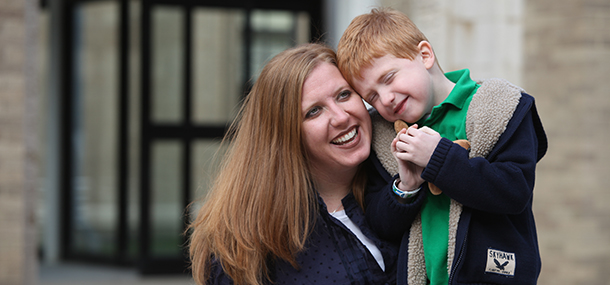
MRI is currently the best way of detecting problems with the heart, and it can find abnormalities even before a child has any symptoms of heart disease. While most children with Duchenne Muscular Dystrophy (DMD) show signs of muscle weakness when they’re young, it takes several more years before the heart shows signs of being affected.
About half of these patients will show signs of a weakened heart by the time they turn 18. However, many other kids will have heart disease and not show signs; DMD prevents them from being able to walk properly, which prevents them from exercising. Early detection of this weakened heart is important, as treatment can delay signs of heart involvement. This allows kids to have a better quality of life.
By imaging the heart with MRI, we can discover if the heart is pumping a normal amount of blood to the body and we can also see if some of the normal heart muscle has been replaced by abnormal fibrous tissue. Here at Cincinnati Children’s we have many years of experience using this technique to detect these problems. If an abnormality of the heart is detected, then your child’s cardiologist can commence therapy, giving him or her a better outlook.
Contributed by Dr. Eric Crotty and edited by Sarah Kaupp.